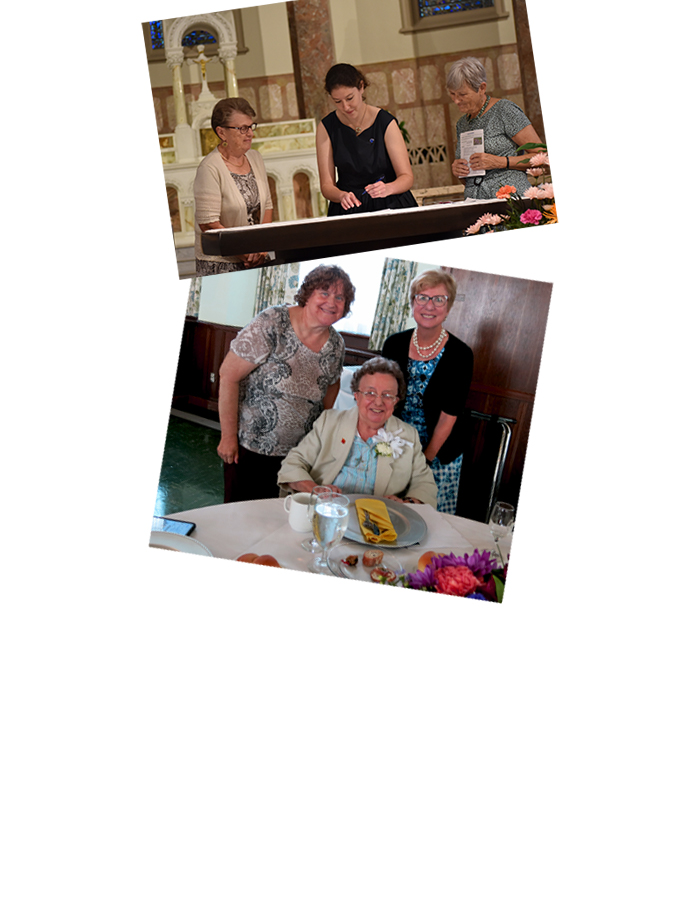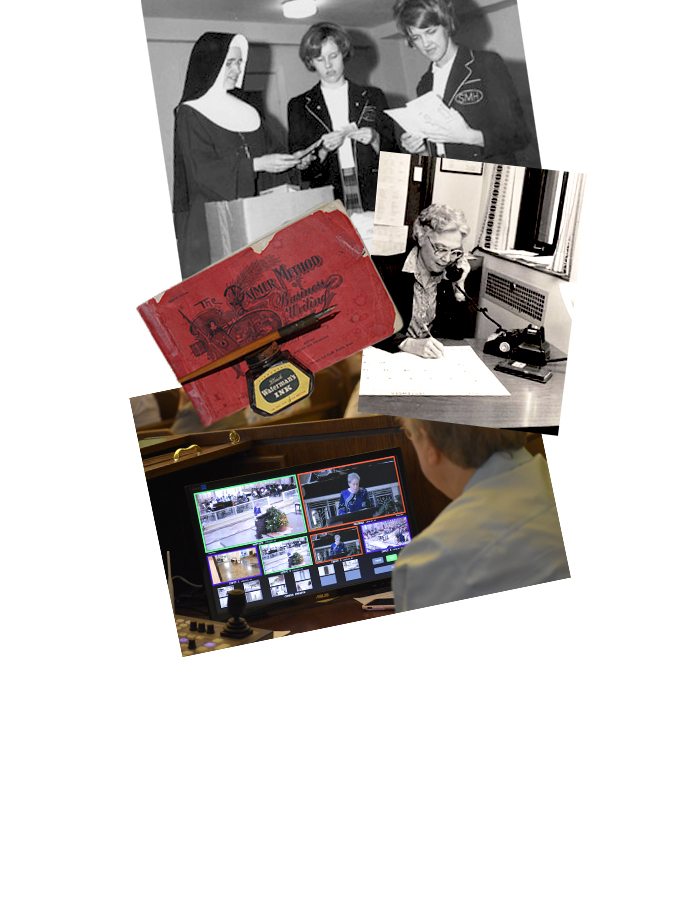
Illustrations by Nancy Ayotte, IHM
By Margaret Brennan, IHM
In a book entitled Amazing Church (2005) Gregory Baum, Catholic theologian and periti at the Vatican Council, while lamenting and pointing out the inconsistencies of the hierarchical Church, especially its seeming indifference to a number of urgent practical problems, speaks and writes with enthusiasm of the evolution of the Church’s official teaching. This is evident in a particular way in its official teaching on the pursuance of peace.
Forty-five years ago John XXIII, having been profoundly moved by the Universal Declaration of Human Rights declared by the United Nations in 1948, wrote his first Encyclical Pacem in Terris (1963) which opened a new approach to Catholic Social Teaching. Beginning with this letter a new theme begins to appear in official documents. Popes speak of “a culture of peace”, the pursuit of peace, and peace-making.
Neither John XXIII nor the Vatican Council supported the well-known “just war theory” supported by both Augustine and Thomas Aquinas who regarded war as a universal phenomenon to be restrained by a commitment to moral principles. John XXIII refused to consider war in this way believing that it could be outlawed and eventually would disappear. In Gaudium et Spes #78, the Church honored the consciences of those who refuse to bear arms and this last year beatified Franz Jaegerstatter an Austrian peasant who followed his own conscience in spite of the admonitions of his own bishop, and was executed for refusing to serve in the German army.
Following the impetus of John XXIII, John Paul II made an urgent plea for a culture of peace and on June 24, 2002 issued his “ten commandments for peace,” a document for which there is no precedent in the Catholic Church. The doctrinal foundation for a culture of peace is the recent recognition of God’s redemptive presence in the whole of history and the Church’s commitment to universal solidarity.
Moved by these urgent papal statements, directions and other urgent signs of the times as well, the IHM Congregation in its Chapter 2000 Directions made its own these powerful directions:
“Impelled by the growing realization that we are interconnected with the whole web
of life, and that the escalation of violence,
increasing global poverty, and the exploitation
of the earth threaten all of creation, we renew
our passion to live the liberating mission of Jesus
in the spirit of humility, simplicity and zeal……working with others to build a culture of
peace and right relationship among ourselves
with the Church and with the whole earth
community.”
The practical implications of this statement challenge us on many levels – in our personal lives, our ministries and our congregational positions.
This Easter time let us also examine our own hearts and spirits, our own commitment to the task and challenge of peace-making.
Let us confess
There are times we prefer
To stay in the tombs
Of our own making –
When we prefer to be kept
In the dark and the dim
When we prefer the cover-up
When we prefer, ah yes,
To rest in peace.Let us admit
A shroud of silence
Wraps around our souls
A cynicism encases
All our still-born dreams
A fear embalms
The body of our works.
It seems easier to lie
Hearing no evil, seeing no evil,
Numb to the point
Of no return.Let us rejoice
That there are cracks
In such tightly wrought tombs
Cracks wide enough, deep enough.
A shaft of truth strikes
Us between the eyes
Cries and whispers force
Filter through the silence.
There is always and forever
An opening for Love.We stir once more,
The shroud of sensibility
Unfurls and falls away
The lid of lethargy lifts
And we arise once more
Into the clear light of day.We are such ordinary easters
Every now and then
Here and there –
Alleluia!– Mary Jo Leddy










